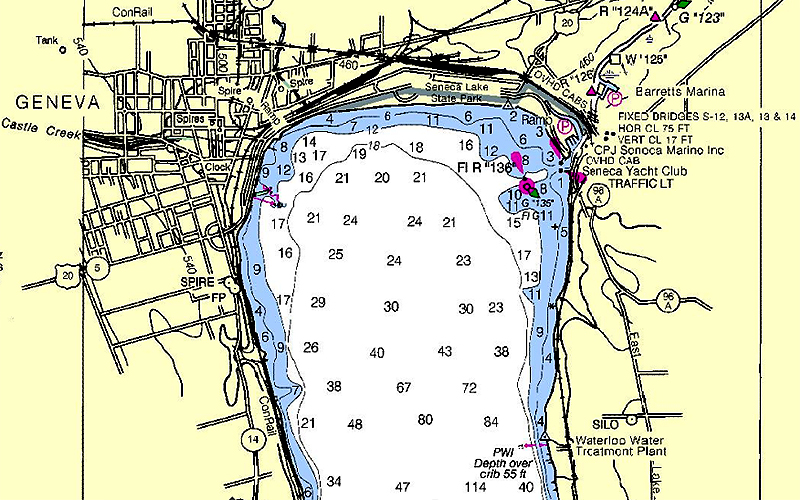Seneca Lake
 |
| Seneca Lake is the largest of the glacial
New York Finger Lakes, and the deepest lake entirely within the
state. The maximum depth where the race course is located is 24 feet
(7.3 m). It is promoted as being the lake trout capital of the
world, and is host of the National Lake Trout Derby. Because of its
depth, Seneca Lake has been a testing site for submarines. The lake
takes its name from the Seneca nation of Native Americans. At the
north end of Seneca Lake is the city of Geneva, New York, home of
Hobart and William Smith Colleges and the New York State
Agricultural Experiment Station, a division of Cornell University.
At the south end of the lake is the village of Watkins Glen, New
York, famed for auto racing and waterfalls.
Because the lake is so large, it extends the growing season in the vicinity of the lake. This is why there are over 50 wineries located around the lake. The latitude is nearly the same as the German region where Riesling grapes are grown, creating award winning Finger Lakes Riesling wines. The wineries are also known for their Ice Wines. The grapes are exposed to frost producing these sweet dessert wines with higher sugar and alcohol content. The lake is fed by underground springs and replenished at a rate of 328,000 gallons (29,520 m³) per minute. These springs keep the water moving in a constant circular motion, giving it little chance to freeze over. Because of Seneca Lake's great depth, it remains a constant 39.2 °F (4.0 °C). During the summer months however, the top 10 to 15 feet (3.0 to 4.6 m) does warm up to a pleasant 70–80 °F (21–27 °C).
There is a YSI EMM-2500 Buoy Platform located in the north end of Seneca Lake roughly in the center. Its coordinates are: latitude: 42°49.13', longitude: 76°57.61'. The buoy has cellular modem communications and measures wind speed and direction, relative humidity, air temperature, barometric pressure, light intensity, and the water's depth and temperature, conductivity, turbidity, and chlorophyll-a levels. The buoy was initially deployed in June 2006. The water depth where it is located is about 200 ft (60 m). Below is a depth chart of the North end of the lake where the race course will be located. |
 |
